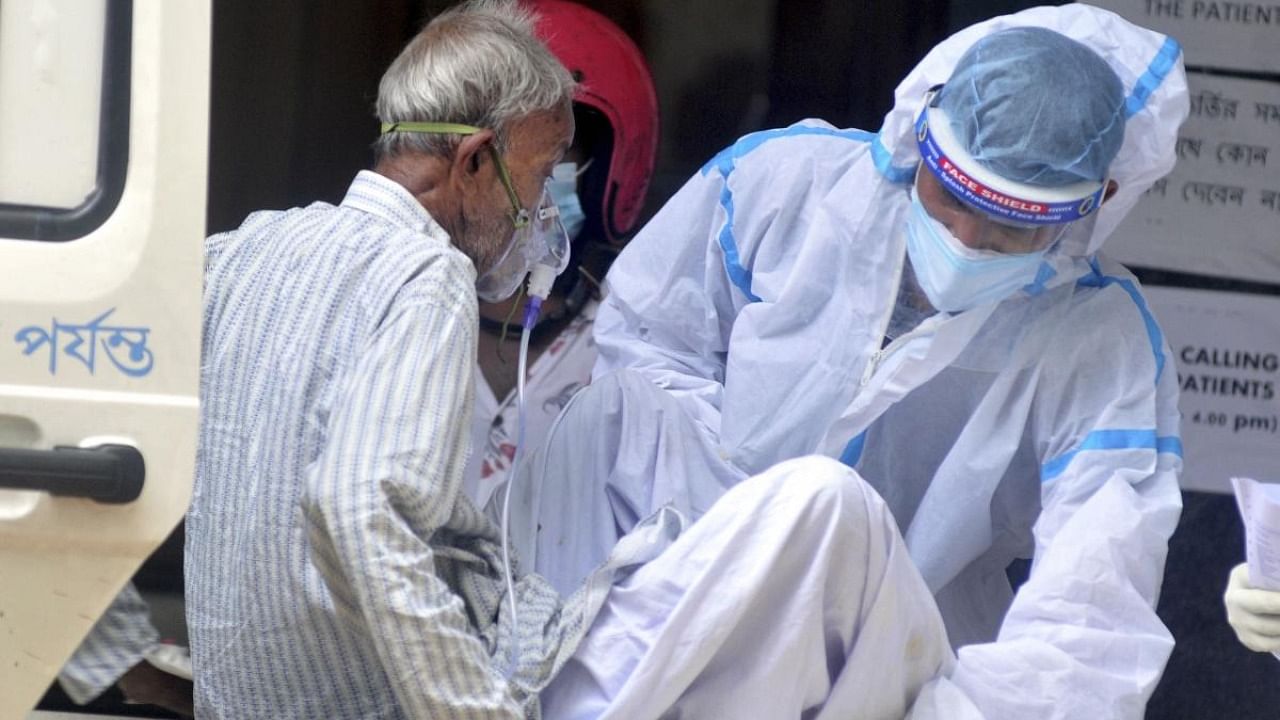
By Mihir Sharma
In cities at least, India’s nightmarish second wave of Covid-19 finally seems to be ebbing. Delhi has brought its test positivity rate below 2 per cent for the first time in two months. The pandemic’s scars won’t be easily erased, however — and they should be a warning to other developing nations. Those countries must learn from India’s experience if they don’t want to repeat it.
The first and most obvious lesson is to avoid overconfidence. A relatively small change in how transmissible the novel coronavirus is can have large, non-linear effects on how fast it spreads. That means strategies that kept the pandemic at bay in 2020 won’t necessarily work in 2021. As new variants emerge, health authorities might need to lock down more firmly and in a more targeted fashion to remain safe.
To do so, they’ll also need to test more widely and perform more genomic sequencing so that they can track which variants are spreading in the population and where. This won’t be easy. Even India, with an extensive scientific establishment, ranks 102nd in the world in the proportion of reported cases sequenced. Other emerging nations will struggle even more.
Richer nations should help. As a recent paper in Science pointed out, there are significant legal barriers to sharing of samples and data internationally. These need to be addressed so virus samples can move across borders quickly. Countries such as the U.K. that have built vast genome sequencing capacity will have to dedicate some of it to tracking samples from other parts of the world.
Emerging nations also need to learn the right lessons about limited healthcare capacity. The tragic scramble in cities such as Delhi for hospital beds, oxygen cylinders and medicines need not be replicated elsewhere. Indian states that established triage systems — telling those with symptoms whether they should go to a hospital or a care center, and which ones had beds free — managed the pressure on their creaky public health machinery better than others. Local authorities should make plans to set up similar systems in their countries, including by phone and online.
Doctors now have a wealth of data about which therapeutic treatments are most effective and which shouldn’t be tried. Patients’ families spent sleepless nights trying to get hold of convalescent plasma or drugs such as remdesivir before the Indian health establishment eventually admitted they were largely ineffective and dropped them from treatment protocols. High-flow oxygen therapy was overused, leading not just to a shortage of medical oxygen but to some extremely nasty additional diseases.
Similarly, other governments know now that when the curve starts steepening, a new variant is detected or test positivity rises above danger levels, they should swiftly establish a centralized task force to allocate hospital resources and prescribe the right therapies.
Finally, and most importantly, all nations should now understand that vaccines work and that interfering with their supply is dangerous. The Indian government has argued that “if just one country shuts down raw material production, the entire supply chain breaks down.” Even the locally made Covaxin vaccine from Bharat Biotech International Ltd. uses 360 ingredients from 10 countries — 200 of them from the U.S. Countries such as the U.S. and U.K., which have subverted supply chains to prioritize their own needs, have a lot to answer for.
Meanwhile, Indian manufacturers’ shift to supplying huge domestic needs first has meant that vulnerable countries in the rest of the emerging world are waiting too long for their shots. International cooperation over the next weeks and months must focus on ensuring that the vaccine supply chain is repaired, export bans end, more manufacturing capacity is created and the existing stock of vaccines is shared more equitably.
What happened in India could happen anywhere. But it need not if India’s government, its peers in the emerging world and the world’s richer nations learn the right lessons, work together — and show a little humility about this awful disease.